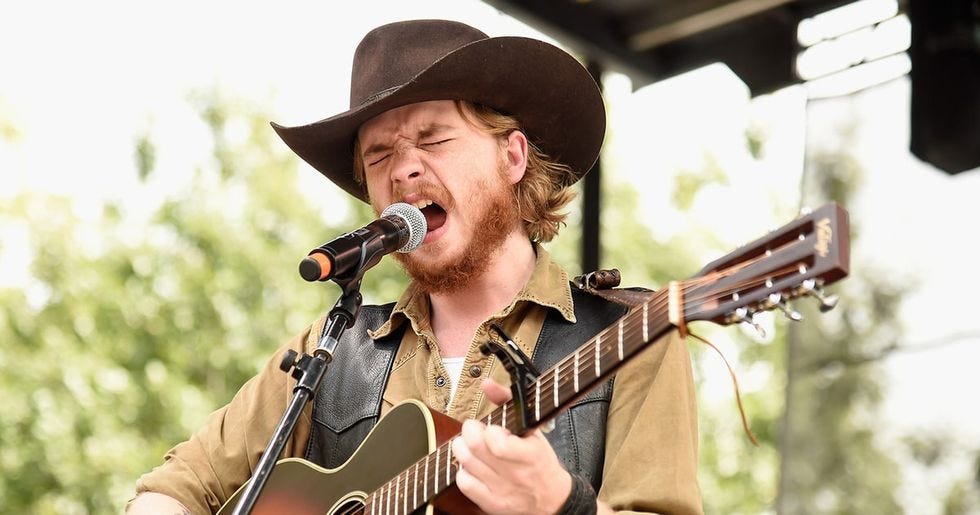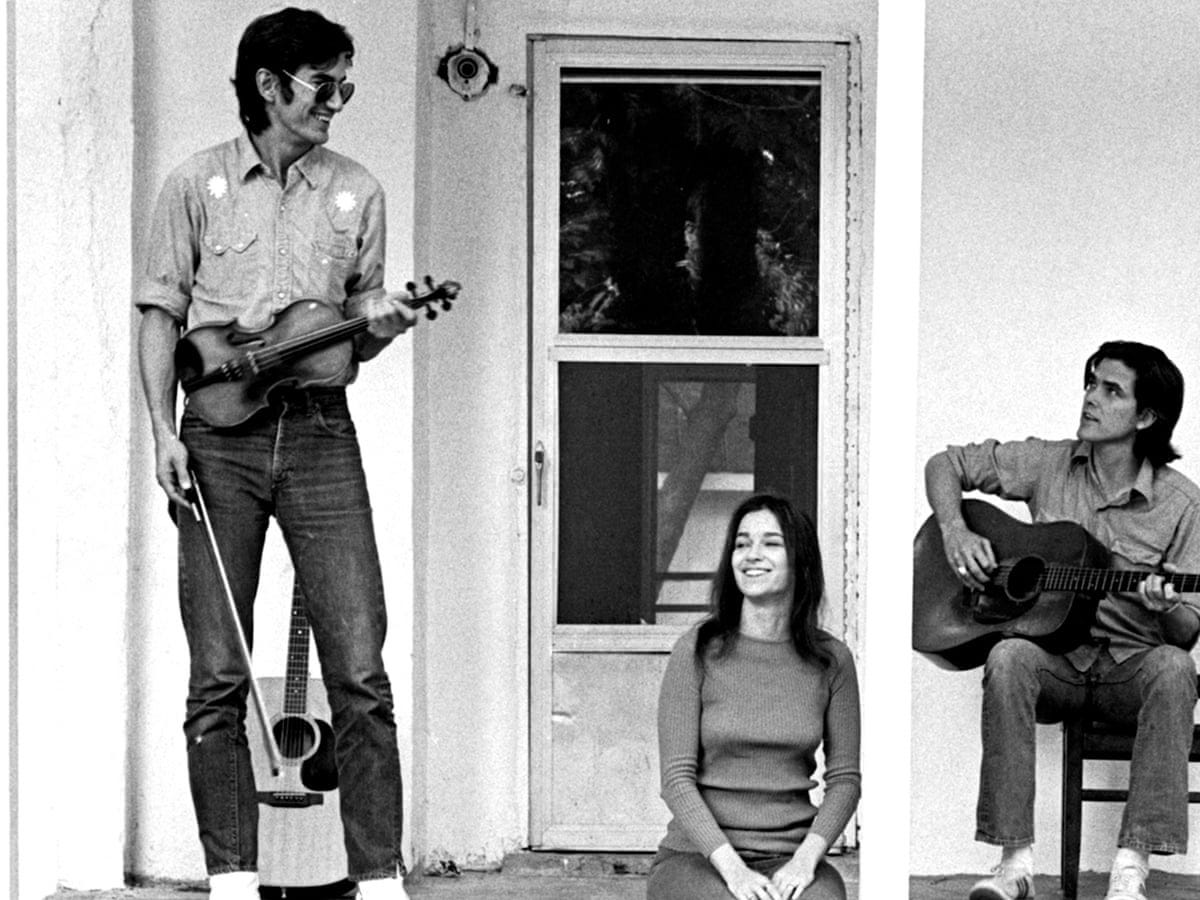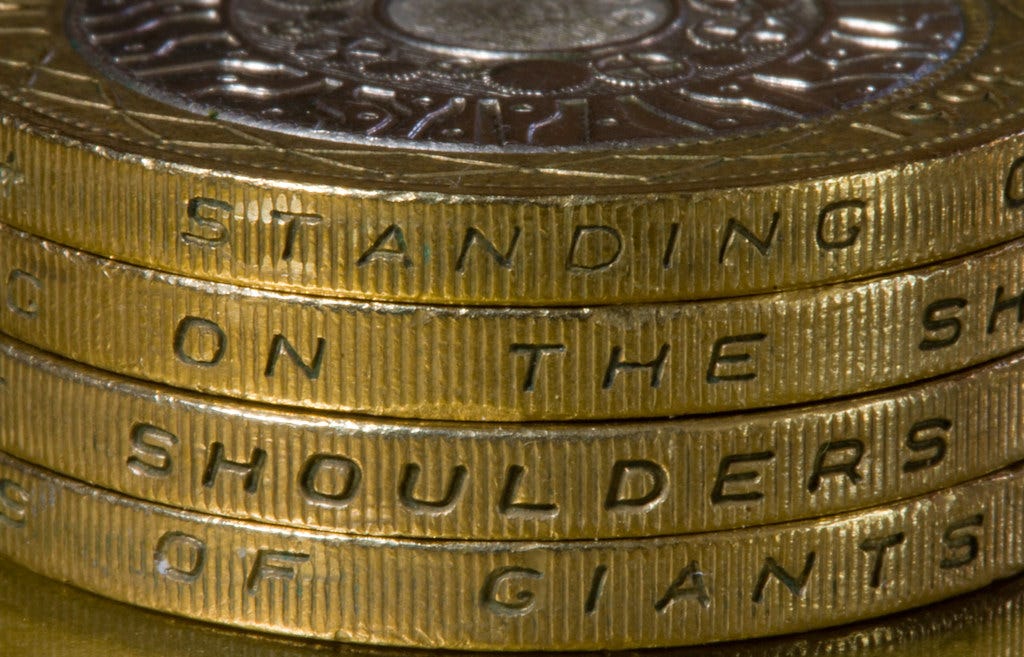Part 2: "Codeine" in Folk and Country Music
Codeine in recent Americana
Part 2: Modern Era
Earlier this week, I covered some codeine-curious songs from early Americana.
“Codeine” (2011)
The popular narrative that surrounds Jason Isbell is tidy: kicked out of the Drive-By Truckers in 2007, struggled with alcoholism for the next five years, quit drinking, married Amanda Shires, and reemerged with the showstopping Americana classic Southeastern in 2013.
It’s a compelling story, but it elides important details and a handful of essential songs. Southeastern deserves its reputation as the definitive Isbell album, but it didn’t come out of nowhere. I am especially fond of “Codeine,” from the 2011 project Here We Rest, which holds up nearly fifteen years later as a creative peak.
“Codeine” is a country waltz, and Isbell on lead guitar and vocals is backed up by a second guitar, bass, piano, fiddle, and some dude absolutely tearing the room up on accordion. The song has a real upbeat, honky-tonk vibe to it, a change of pace from Isbell’s typical tendency to somber acoustic folk or straight-up Southern rock.
If there's one thing I can't stand
It's this bar and this cover band
Trying to fake their way through 'Castles Made of Sand'.
That's one thing I can't stand.If there's one thing I can't take
It's the sound that a woman makes
About five seconds after her heart begins to break
That's one thing I can't take.
She should be home by now but she ain't.
I should've gone by now but I cain't.
One of my friends has taken her in and given her codeine.
One of my friends has taken her in and given her codeine.
In the first verse, Isbell establishes his narrator as a barfly—a standard framework for his songwriting of this era (see “Streetlights,” “Elephant”). The song takes place post-breakup, but the narrator’s role in the split is ambiguous. He found himself dreading her moment of heartbreak, which suggests some control over the situation. His line about "the sound that a woman makes" is one of the finest he ever wrote; it conjures a heartbroken whimper, or an initial sob, or whatever the listener's memory bank supplies.
Darlin' I'm not one to judge
But if I was then I'd say you don't look so good.
Got no answers of my own
But with you gone, this place looks bigger than it should.If I call when I ain't drunk
This old boat'll still be sunk
'Cause one of my friends has taken her in and given her codeine
'Cause one of my friends has taken her in and given her codeine
In “Codeine,” Isbell gives us a funny, bracing look at the whirlwind of life in active addiction, as a drunken barfly pointlessly mourns the end of a trailer-park romance. The story never really goes anywhere; it has no arc, because narrative arcs require main characters with agency. And the narrator here isn’t the type to actually try and fix his life up. He’s more inclined to drink—and complain.
Codeine itself, the song’s centerpiece, is elevated to mythical status and framed as the reason that Isbell’s narrator can’t get his girlfriend back. This isn’t true, of course, and doesn’t reflect the reality of codeine, which is a low-grade painkiller unlikely to ruin anyone’s life.
Unlike Buffy Sainte-Marie’s melodramatic, D.A.R.E.-style song “Cod’ine,” Isbe’ll’s “Codeine” is deliberately funny. The drug itself is beside the point; it’s a stand-in for the narrator’s cuckolding at the hands of his supposed friend.
“Codeine Dream” (2017)
Colter Wall is a Canadian singer-songwriter with the most gravelly, gorgeous country baritone the Lord ever handed out. Born into the upper middle-class as the son of a powerful Saskatchewan politician, Wall started to record and release music while he attended college near home. A few songs broke through, and then a few more, and before long he was a country music star.
Much like his musical idol Townes Van Zandt, Colter Wall seems to have built his adult life in deliberate contrast to his upbringing. After achieving success, he purchased a large ranch property near his hometown of Swift Current, where he works, works hard, as a hands-on yearling rancher in between musical projects.
“Codeine Dream,” from his self-titled 2017 release, is one of Wall’s best songs. It provides a dark and self-serious counterpoint to Isbell’s punchy “Codeine;” this is heavy country songwriting. It is a grimly arranged acoustic ballad, with Wall delivering his full-throated vocals over a simple fingerpicked chord progression.
The song is produced by Nashville maestro Dave Cobb (to whom Prine and Isbell both owe a great debt), and he engineers a theatrical atmosphere; Wall is accompanied by the occasional whines of a Dobro resonator guitar (the effect is similar to lap-steel), and a light drum or bassline disappears just as soon as it arrives.
Prayin' on the north wind to lead me to my door
Thumbing through my greenbacks, swearin' I made more
Some cruel nightly cycle leaves me cryin' on a motel floor
But I don't cry for you anymoreFor many a dark hour, I look up to the sky
Many unkind thoughts are laid on my hazy eyes
Sometimes I get to thinkin', "why wait around to die?"
But I don't think of you, so I get by
The main character here is a blue collar addict, maybe an oil rig roughneck or a traveling linesman. Someone who counts their money at the end of the day, someone who sleeps in a motel. He’s in a dark place, drinking or drugging himself to sleep unsuccessfully; hounded by insomnia and heartbreak, Colter Wall’s “Codeine Dream” narrator considers suicide.
Every day it seems
My whole damn life's just a codeine dream
I don't dream of you
Anymore
While he is clearly influenced by Townes Van Zandt—he’s covered him, more than once—there’s a reason that Colter Wall conversations always come around to The Man In Black. We haven’t really heard a voice like this since Cash, and the chorus of “Codeine Dream” is the perfect showcase for his gravelly range.
He goes a little higher, louder, really stretches the words out, as the instruments fade out and his vocals take center stage. My whole damn life’s just a codeine dream, he sings, and it’s impossible not to believe him. We are made to feel like hearing this song, hearing from this narrator, is a miracle; we feel that he had to battle through a thicket of bad habits, tear apart the walls of his drug-addled fugue state, just to bring us these words, just to tell us that his life absolutely sucks.
“Codeine Dream,” like the other songs I have covered here, abstracts heavily from the actual reality of the drug codeine. But while the narrator in Colter Wall’s song finds himself in a terrible place, he never suggests that the substances are the source of his pain. They are a distraction from the pain. There’s even a hint of philosophical skepticism in Colter Wall’s “Codeine Dream.” If your whole damn life’s just a codeine dream, is any of it real?
Also of Note: Zach Bryan, Trampled By Turtles
I would be remiss not to mention two other recent (and relevant) tracks: “Codeine” by Trampled By Turtles (2015), and “Codeine Pills” by Zach Bryan (2020). The TBT song is right in their wheelhouse, a high-tempo bluegrass banger that verges on punk rock despite its country instrumentation. The entire song is a riff on “Waitin’ Around to Die,” centered around a vague, post-breakup setting with a narrator who has made a new “friend” in codeine, and—just like Townes—thinks that friend is the nicest thing he’s seen.
The Zach Bryan song, on the other hand, is more of a straight-up country throwback, in line with the rest of his early-career output: “Codeine Pills” offers a simple, percussive, hard-strumming guitar melody to back up Bryan’s wordy, rowdy, and intuitive lyricism.
Every time you come to town, we wind up doin' the same thing
Gettin' high and runnin' around, the blame you tend on placin'
And are you happy now Anita now that you're finally free
When you said that you were leavin' and only comin' back for meCheap booze and codeine pills ain't worth all the losin'
Nothin' can come between us, damn a life worth choosin'
Cheap booze and codeine pills ain't worth all the losin'
Nothin' can come between us, damn a life worth choosin'
To Conclude
It’s a little strange that so many folk and country songs have been recorded on the subject of codeine, given the drug’s relatively low strength and frequency of abuse. Given what the opioid crisis in America actually looks like, you would expect these kinds of songs to be more commonly written about heroin, or oxycontin.
I believe we can chalk this up to the immense influence of Townes Van Zandt, the songwriter’s songwriter, a truly towering figure in Americana. When he released “Waitin’ Around to Die,” he changed the course of country music forever. Townes is the sacred cow of authenticity in country music; he entered codeine into the lexicon with the final verse of outlaw country’s inaugural anthem.
As a commercial genre, “outlaw country” is tied to the best-selling peaks of Willie Nelson, Waylon Jennings, Merle Haggard, and others, who took up with the burgeoning country scene that took over Austin in the 1970s and borrowed heavily from their new, hard-living friends to craft a new country sound and aesthetic in direct contrast to the polished Nashville country of the 1960s.
Although the big names in outlaw country sold millions of records—and Townes’ biggest ( and only) hit was Willie and Merle Haggard’s 1983 cover of “Pancho and Lefty”—the “outlaw country” superstars found their aesthetic and sonic roots in the zeitgeist generated by Texas songwriters of the era like Townes, Guy Clark, and Blaze Foley. There is no shame in the ecstasy of influence, of course. All great art comes from standing on the shoulders of giants.






Thanks, Dani, your posts are always insightful. I’m not familiar with Colter Wall, so I’m looking forward to digging into his catalog. The other artists are longtime favorites, but I’ve realized I need to spend more time exploring their lyrics. That’s why I value your work: you take the time to do just that, making thoughtful and meaningful connections.